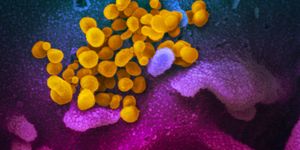Toward Understanding Anesthesia
General anesthesia refers to the medical procedure anesthesiologists apply to induce paralysis, unconsciousness, and insensitivity to pain in patients. Although this sedating method has gone through a lot of development over the last century, scientists are still unsure about how it works at the cellular and molecular level.
The year of 2020 has marked multiple breakthroughs in our understanding of this essential medical procedure. In April, researchers at the Scripps Research Institute reported that they have identified a signaling molecule called lipid phosphatidic acid (PA) is at the center of modulating the neuron-dampening actions of inhaled anesthetics.
Their study showed that in wild type fruitflies, the inhaled anesthetics disrupt the localization of phospholipase D2 (PLD2) in lipid rafts (microstructures on neurons' cellular membrane), which led to the production of PA and thereby inducing anesthesia. However, in the genetically knockoff animals the PA production was blocked, which granted the flies resistance to the sedatives.
In September, scientists at the University of Texas Southwestern Medical Center resolved another key piece of the puzzle, by studying the intricate structures of GABAA receptors with cryo-electron microscopy (cryo-EM).
These transmember receptors are known molecular targets for intravenous (IV) anesthetics in the central nervous system. Their cryo-EM images of the anesthetic-bound receptors indicated both common and ligand-specific regions for the sedating molecules to bind, which are also shared with a psychoactive drug called diazepam. The team concluded that IV anesthetics exert their inhibitory actions in the brain through overlapping and distinct interacting mechanisms.
Both papers added some much-needed knowledge to our understanding of how anesthetics influence the neuron biology.
Source: SciShow via Youtube








